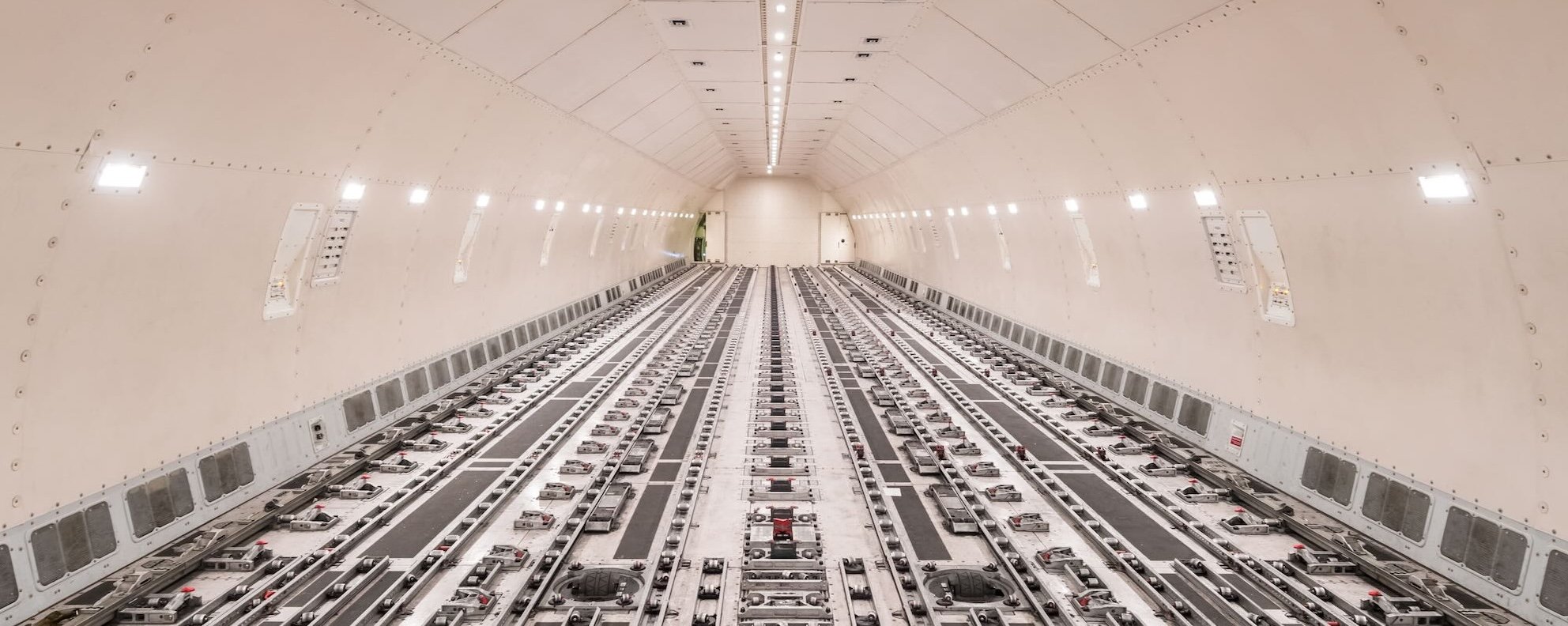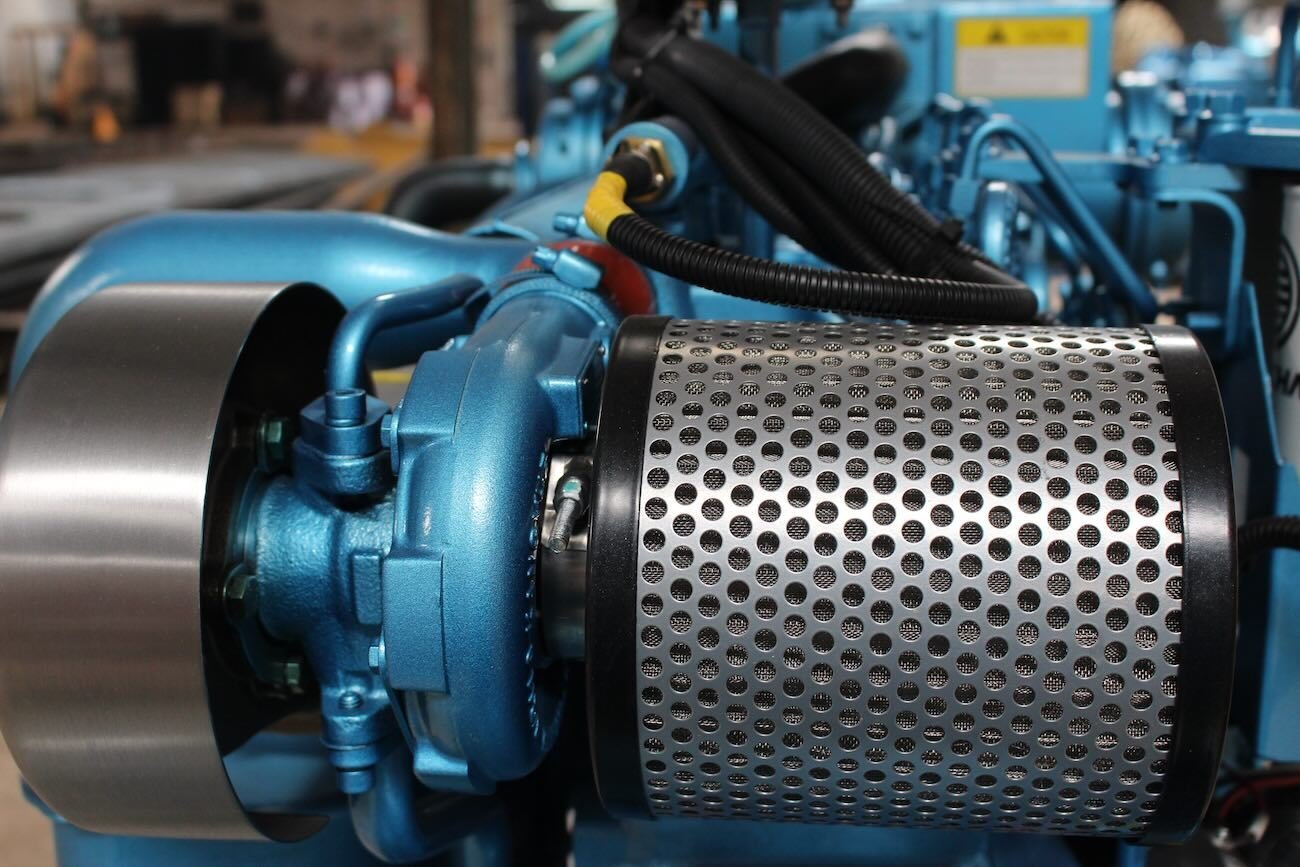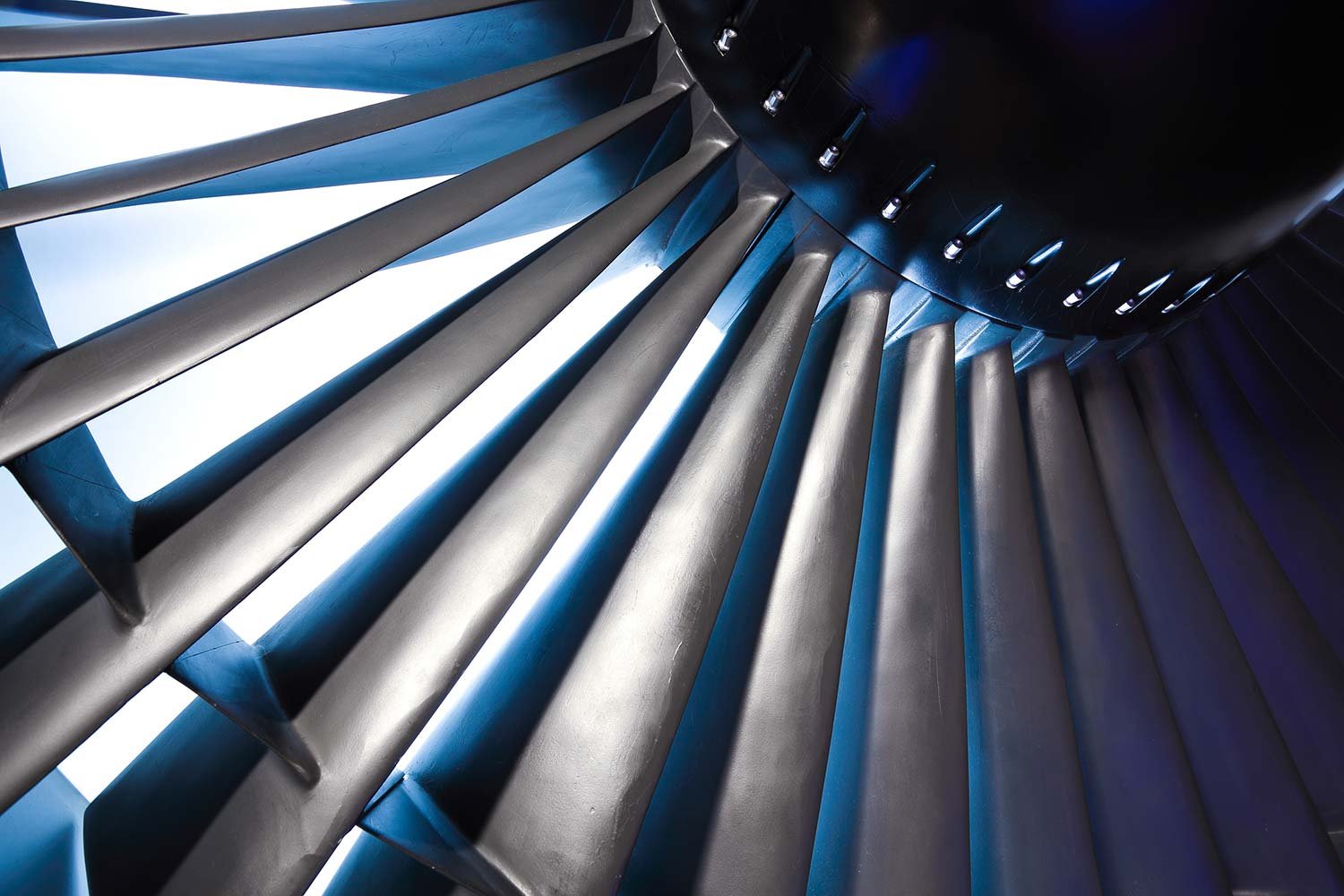In air freight, “express cargo” designates shipments that absolutely must arrive as quickly as possible. Carriers such as FedEx, UPS, and DHL run specialized, high-speed networks that move these time-critical parcels, documents, medical supplies, or replacement parts on the next available—or even a dedicated—flight. Because speed and reliability outrank cost, shippers pay a premium for service levels that virtually guarantee the goods will travel exactly as booked, often reaching their destination overnight or within one to two days, thereby preventing production downtime or meeting tight e-commerce delivery promises.
Moving heavy and oversized cargo poses a unique logistics challenge. Traditional shipping methods like ocean freight or trucking can be impractical when a single piece of equipment weighs dozens of tons or has enormous dimensions. In industries ranging from energy to aerospace, companies sometimes face urgent scenarios where critical oversized components must be delivered quickly across long distances.
In such cases, heavy & oversized air cargo charter services offer a vital solution, providing dedicated aircraft to transport freight that simply cannot wait for a slow boat or be broken down into smaller shipments. Air cargo charters for heavy freight are an essential niche in the United States logistics market.
Rather than relying on scheduled airlines, shippers can charter a cargo aircraft on-demand to carry their load directly to the required destination. This point-to-point, bespoke approach is often the only way to move gargantuan items swiftly. From oilfields in Texas to infrastructure projects on the West Coast, U.S. companies turn to heavy air cargo charter flights to keep their operations on schedule and minimize downtime. The result is a highly flexible and responsive freight solution optimized for size, weight, and speed.
WHAT IS AIR CARGO CHARTER?
Air cargo charter refers to the arrangement of a dedicated aircraft for carrying goods, outside of the regular scheduled airline network. In a charter shipment, a client essentially rents the entire plane exclusively for their cargo’s journey. This means the flight itinerary, schedule, and cargo load are all tailored to the shipper’s needs, rather than fitting into a commercial airline’s preset routes.
Charter services are commonly used when freight is too large, heavy, or time-critical to move via standard air freight channels. By securing a whole aircraft, shippers gain the freedom to fly directly between suitable airports of their choice, on their own timetable.
Air cargo charters enable transport of oversized and heavy items that would never fit in the belly of a passenger plane or even on standard dedicated freighters. If you have a one-of-a-kind piece of machinery or an urgent project shipment, chartering a cargo plane lets you move it where it needs to go, when it needs to get there.
TALK TO AN EXPEDITOR NOW
Get a Quote in Minutes for Your Time-Critical Freight Needs
How Air Cargo Charter Services Work
- Organizing a heavy cargo charter involves careful coordination and expertise. First, the charter provider or broker will assess the shipment’s specifications – weight, dimensions, fragility, origin, destination, and deadline. Based on these factors, they select a suitable cargo aircraft type (or types) that can safely carry the load. For truly massive or oversize cargo, this often means arranging a freighter with nose-loading or ramp-loading capability (such as an Antonov heavy-lift aircraft or a Boeing 747 freighter). The charter team also identifies departure and arrival airports that can handle both the aircraft and the cargo. In the U.S., this might involve flying out of a major industrial hub like Houston, TX or Atlanta, GA, and into remote project sites or special airfields equipped for giant cargo unloading.
- Once the aircraft is secured, the air charter service manages the complex logistics of the operation. This includes obtaining flight permits (especially if the route is international), coordinating with airport authorities for slot times, and arranging any en-route technical stops. (Heavy transports often require refueling stops due to weight – for instance, an Antonov An-124 charter carrying a 55-ton satellite from France to Florida had to stop in Gander, Canada for fuel.) The charter company also handles ground support: sourcing cranes, custom pallets, or high-loaders needed to load and unload the cargo. Oversized freight may need special cradles or bolting inside the plane to secure it for flight.
- During the operation, a dedicated team oversees every step. A charter flight broker or account manager stays in close contact with the client, providing updates on the flight’s progress. Unlike regular freight, which might transfer through multiple hubs, a charter flight is typically non-stop or only stops as needed for fuel, minimizing handling. This direct cargo aircraft charter approach reduces the risk of damage and avoids delays that can occur in hub-and-spoke transport. Upon arrival, the charter service may also coordinate onward delivery (for example, arranging heavy-haul trucks or cranes at the destination). Throughout the process, the focus is on a turnkey solution – the charter provider uses its experience and network to deliver the oversized cargo safely, on schedule, and to the precise location required.
Examples of Heavy & Oversized Air Cargo Charter
Many different industries in the U.S. rely on heavy cargo charters when standard logistics can’t do the job. Below are several examples of the types of heavy and oversized air charter projects that utilize specialized aircraft. These cases illustrate how charter flights keep essential business sectors running by moving extremely large and heavy items efficiently:

Oil Industry Equipment
The oil and gas sector frequently turns to air charters for urgent delivery of drilling and production equipment. When a critical piece of an oil rig or refinery breaks down, every hour of lost production can cost a fortune. For instance, transporting a massive blowout preventer or a drilling motor by sea from Houston to an overseas oilfield might take weeks – time the operation cannot afford. Instead, oil companies will charter a heavy-lift cargo plane to fly the equipment directly to the site. Aircraft like the Antonov An-124 or Ilyushin IL-76 (both designed for heavy cargo) have been used to carry oilfield tools, pipeline valves, and even entire oil rig components. These items often weigh tens of tons and may be too bulky for regular flights, but a charter can move them in one piece.
In the U.S., energy companies based in Houston, TX (a major oil industry hub) commonly employ cargo plane charter services to send large parts to remote drilling locations or offshore platforms. The ability to deliver a replacement part within a day or two by air charter can save an oil operation from a prolonged shutdown, highlighting the invaluable role of charters in the oil industry supply chain.

Power Station Parts
Electric utilities and power generation companies also make use of heavy lift air charter flights to transport oversized power station components. When a generator, turbine, or transformer in a power plant fails, restoring electricity quickly is a top priority. Many of these components are incredibly heavy – large industrial generators and transformers can each weigh anywhere from 50 to 200 tons.
If a U.S. power station needs a spare part from overseas, or if a remote area’s electric grid is down, an air charter might be the fastest (or only) viable option. For example, power companies have chartered freighter aircraft to fly giant transformers and gas turbine rotors directly into project sites.
These parts are so bulky that they often require the capacity of an Antonov An-124 or similar aircraft to lift them. The charter flight can deliver the equipment in a matter of hours, whereas shipping by ocean could take a month or more. By using a charter service, power infrastructure firms ensure minimal disruption – a critical new turbine or replacement transformer can be airborne from the factory to the plant, helping get the lights back on with exceptional speed.

Marine Diesel Engines
The marine industry’s vessels and onshore facilities sometimes demand air transport for huge engines and propulsion systems. Marine diesel engines for large ships (such as cargo vessels or cruise ships) are enormous, often standing multiple stories tall when fully assembled. If a ship’s engine suffers a catastrophic failure, a replacement or major spare part might be needed urgently to avoid stranding the vessel or delaying its voyages.
In one scenario, a shipyard or port in the U.S. might charter a cargo aircraft to bring in a new engine from the manufacturer overseas. These engines can weigh in the tens of thousands of pounds, and their dimensions require special handling.
Chartering a plane like a Boeing 747-8F or AN-124 allows the engine or its components to be flown in as a single load, rather than dismantling it entirely. Likewise, marine infrastructure projects – say, a remote shipyard building a vessel – may need heavy engines or generators delivered quickly for installation. An air charter ensures that marine diesel power units and other hefty marine equipment arrive on schedule, supporting tight project timelines and avoiding idle crews or ships.

Engineering and Construction Equipment
Large-scale engineering and construction projects often involve massive machinery and components that can challenge conventional transport methods. Consider a scenario where a U.S. construction firm needs to get a 100-ton heavy bulldozer or a piece of a tunnel boring machine to a job site on short notice. If the site is overseas or in a landlocked region with limited infrastructure, an aircraft charter might be the most practical solution.
Construction companies have utilized cargo charters to move all manner of heavy equipment – from giant earthmovers and cranes to prefabricated bridge sections and industrial presses. These items might not only be heavy but also have awkward shapes that don’t fit in standard containers. With an air charter, the equipment can be flown directly to the nearest airport or airstrip to the project, even if it’s in a challenging location.
For example, engineering firms have chartered planes to deliver oversized pump units to remote mining sites and large drilling rigs to construction zones where timing was critical. By leveraging charter services, the construction industry can mobilize big machinery rapidly across state lines or continents, ensuring projects stay on track and heavy gear is where it’s needed, when it’s needed.

Aircraft Engines
Ironically, the aviation industry itself is a frequent customer of air cargo charters when it comes to transporting aircraft engines. Modern jet engines for commercial aircraft are incredibly heavy – a single large turbofan engine can weigh between 5 and 10 tons and has a very wide diameter.
When an airliner is grounded due to engine issues (a situation known as Aircraft on Ground, or AOG), airlines often charter a cargo plane to deliver a replacement engine as fast as possible. For instance, if a Boeing 777 is stranded in Seattle waiting for a new engine from a manufacturer on the East Coast, a chartered freighter can fly that engine cross-country overnight.
This bypasses the delay of routing it through multiple connecting flights. Additionally, aircraft manufacturers and maintenance providers use charters to reposition engines and heavy aircraft parts around the world. Some cargo aircraft are even modified to specifically carry jet engines (mounted on custom cradles or pallets) to support urgent AOG responses.
By using a charter flight, airlines ensure that a spare engine or critical airframe part arrives in hours instead of days, dramatically reducing costly downtime for grounded aircraft. In the U.S. market, where dozens of major airports and carriers operate, having the option of an on-demand charter for hauling aircraft engines is a key contingency in maintenance planning.

Satellites and Communications Equipment
The space and telecommunications sectors also rely on cargo charters, especially for moving delicate but heavy high-tech hardware. Satellites, for example, are extremely costly and time-sensitive cargo. Before a satellite can be launched, it must be transported from the manufacturing facility to the launch site – often crossing international borders.
These satellites often require special climate-controlled containers and can weigh many tons. Air charter is the preferred method to ensure the satellite travels safely and swiftly. A notable case involved a SpaceX communications satellite weighing about 55 tonnes that was flown from France to Florida aboard an Antonov An-124, using a custom-built container for protection. The charter flight (with a fueling stop en route) delivered the satellite directly to NASA’s launch facility in Cape Canaveral, exemplifying how charters support the space industry.
Similarly, large communications equipment like broadcast antennas, industrial servers, or data center hardware might need rapid deployment to support network infrastructure. If such equipment is too bulky for passenger flights or needed on an urgent timeline (for example, restoring communications after a disaster), a cargo charter can carry it directly to the affected region. The ability to charter an aircraft for satellites and comms gear gives technology companies and government agencies the confidence that their valuable, outsized payloads will arrive intact and on schedule.

Vehicles
Transporting vehicles by air is usually a last resort – but in critical situations or special projects, it does happen. Charters have been used to fly everything from military tanks and helicopters to civilian heavy vehicles and prototypes. In the realm of public infrastructure, for example, a large locomotive or railcar might be urgently needed to fulfill a contract or replace a damaged unit.
One famous airlift saw an Antonov An-124 carry a 146-ton General Motors locomotive from Canada to Ireland, demonstrating that even locomotives can take to the skies if necessary. In the U.S., disaster response or government operations might charter cargo planes to move firefighting vehicles, ambulances, or power trucks to a disaster zone rapidly.
Automotive companies have also air-freighted concept cars and industrial vehicles for international trade shows or testing, when time was too short for sea freight. While expensive, shipping vehicles by chartered aircraft provides unmatched speed and direct delivery. Whether it’s delivering a specialized mining dump truck to a remote site or sending high-end electric buses to a city on a deadline, air charters give vehicle shippers a way to meet tight schedules and handle extraordinary dimensions.
Even the U.S. government occasionally uses charter flights to relocate outsized defense and relief equipment, underscoring that when it comes to moving big vehicles or machinery in a hurry, air charter can be the solution of last resort.

Air Cargo Charter Advantages for Heavy and Oversized Cargo
- Air Freight Speed and Urgency
- Air Shipping Flexibility and Direct Routing
- Capacity for Oversized Loads
- Reduced Handling and Risk
- Avoiding Opportunity Cost and Downtime
Air Freight Speed and Urgency
Air Shipping Flexibility and Direct Routing
Capacity for Oversized Loads
Reduced Handling and Risk
With traditional shipping, especially international, a piece of cargo might be loaded and offloaded multiple times – from truck to port, onto a ship, off the ship to another truck or rail, then onto another local truck, etc. Each transfer introduces risk of delays, damage, or loss. In contrast, a charter flight often involves one continuous journey from origin to destination (with maybe a single refuel stop).
The cargo is loaded once at the start and unloaded once at the end. Fewer touchpoints mean a much lower chance of accidents, mishandling, or exposure to the elements. Cargo charter companies also often have expert loadmasters and crews who specialize in securing unusual freight. The result is a safer delivery with minimal jostling of the valuable goods. For sensitive heavy equipment (like precision machinery or fragile prototypes), this reduction in handling is a major advantage to ensure it arrives in perfect condition.
Avoiding Opportunity Cost and Downtime
While charters are more expensive than regular shipping, they can actually save money by preventing much larger losses. This is especially true in cases where a project or facility stands to lose millions per day if a part is delayed. By flying in a replacement via charter, companies can resume operations quickly and avoid extended downtime costs.
Similarly, meeting a construction deadline or contract commitment by using a charter can prevent penalties or lost revenue that dwarf the charter fee. In essence, charter air freight provides assurance and reliability – the shipment will arrive by the required deadline, allowing business to continue as planned. For many logistics professionals, having that guarantee (instead of uncertainty with standard freight) is worth the investment when high stakes are on the line.
Why Work with AirFreight.com?
We know that minutes matter, so every shipment receives the meticulous planning and secure handling required for an on-time arrival. At the same time, our analysts design cost-sensitive routing that meets your deadline without straining your budget. Choose us as your air-freight broker and gain a partner who keeps your supply chain flowing and your business moving forward.
Single Point of Contact
Free Freight Quote
24/7 Logistics Coordination
Time-Critical Freight
Experienced Expeditors You Can Rely On
Frequently Asked Questions
What is a cargo freighter aircraft?
A cargo freighter aircraft is an airplane built—or modified from a passenger model—exclusively to carry freight rather than people. These aircraft feature:
-
Spacious, reinforced fuselages: Wide, open holds with strong floors designed to support heavy pallets and standardized containers.
-
Oversized cargo doors: Large side-or nose-mounted hatches that allow easy loading and unloading of bulky or awkwardly shaped items.
-
Minimal interior appointments: No passenger seats or windows on the main deck, maximizing usable volume for goods.
In short, a freighter is a purpose-built air cargo transporter, engineered to move everything from small packages to industrial machinery quickly and efficiently.
How do freighter aircraft differ from passenger planes?
Interior Layout:
Freighters have an unobstructed main deck equipped with roller tracks or tie-down points. Passenger planes install rows of seats, overhead bins, and cabin amenities.
Structural Reinforcements:
Freighters feature strengthened floors and cargo restraint systems to handle heavy loads. Passenger aircraft floors are optimized for distributed seating loads and include cabin fixtures.
Loading Systems:
Freighters use specialized cargo doors (side or nose) and onboard cranes or rollers. Passenger jets employ smaller service doors and aren’t designed for pallets or large containers.
Operational Flexibility:
Freighters can carry oversized or hazardous cargo that would be prohibited on passenger flights, and they often fly routes tailored to freight demand rather than hub-and-spoke passenger networks.
What is the largest cargo plane in the world?
The Ukrainian-built Antonov An-225 was the heaviest aircraft ever flown, boasting six engines and a payload capacity of up to 250 000 kg (550 000 lb). Originally designed to haul spacecraft components, it combined an immense wingspan with a cavernous cargo hold. Sadly, the sole An-225 was destroyed in 2022.
Today, the An-124 and 747-8F dominate the skies for ultra-heavy and high-volume cargo missions, succeeding the An-225’s legacy as the pinnacle of air freight capability.
What is express cargo in air freight?
What are the advantages of using dedicated cargo freighters?
Dedicated cargo freighters give shippers and logistics operators remarkable flexibility, capacity, and control. Because these aircraft are built solely for freight, they feature oversized doors, strengthened floors, and cabins free of passenger constraints, so heavy machinery, outsized loads, or large consolidated shipments can be loaded and flown in a single move—something belly-hold passenger flights cannot handle.
Operators can schedule departures at the exact times and along the bespoke routes their supply chains demand, bypassing the limitations and delays of passenger networks. The cargo-only environment also enhances reliability: freight is handled in facilities geared exclusively toward goods, reducing ground time and the risk of baggage mishaps or passenger-related holdups.
Sensitive commodities such as “Cargo Aircraft Only” dangerous goods or temperature-critical pharmaceuticals benefit from dedicated attention and specialized space. While the cost of operating a freighter is high, concentrating many tons on one aircraft can lower the per-unit rate compared with buying scattered belly capacity across multiple flights.
From an airline’s perspective, freighters act as flying warehouses that smooth global cargo flows, especially when passenger services fall short. Together, these factors make dedicated freighters indispensable for time-critical, high-volume, or special-handling air shipments.
What cargo aircraft can handle oversized or heavy machinery shipments?
Oversized or exceptionally heavy machinery travels by air on freighters engineered for outsized loads. The workhorse in this category is the Boeing 747 freighter—especially the latest 747-8F—which keeps its distinctive nose-hinged door so entire jet engines, large vehicles, or industrial assemblies can slide straight into the tall main deck, bypassing the narrower side portals of standard widebodies.
For even greater dimensions or weight, logistics planners charter the Antonov An-124: this four-engine giant lowers a front ramp to accept pieces weighing up to roughly 150 tons, from power-plant generators to mobile cranes and armored carriers. When it was still flying, the six-engine An-225 “Mriya” stood alone for the most extreme one-off moves, thanks to a cargo bay longer and wider than any other aircraft’s. Charter operators such as Antonov Airlines or Volga-Dnepr supply these heavy-lift jets, which feature reinforced floors, multi-axle landing gear that spreads weight across runways, and onboard winches or cranes that help load freight too unwieldy for ordinary airport equipment. Shippers turn to them whenever a shipment’s sheer size rules out the belly holds of passenger 747s, 777s, or A350s, ensuring the machinery still reaches its destination in days rather than weeks at sea.
Which cargo aircraft are used for intercontinental air freight?
Intercontinental air freight moves primarily aboard wide-body freighters engineered for both long range and heavy payloads. The Boeing 777F—today’s longest-leg twin-engine freighter—can carry roughly 102 tons nonstop for about 9,000 kilometres, making it a go-to airframe for trans-Pacific and trans-Atlantic lanes.
Four-engine 747 variants remain staples as well: the modern 747-8F hauls around 137 tons over some 8,000 kilometres, while many carriers still deploy 747-400Fs on similar ocean-spanning routes. Mid-capacity options such as the 767-300F handle lighter but still profitable trans-Atlantic or Asia–Middle East sectors, and a dwindling fleet of tri-jet MD-11Fs continues to link major hubs despite gradual retirement.
In certain regions, Airbus wide-body freighters—the A330-200F and even the older A300F—cover long hauls where their range and economics align with demand. Whatever the make or model, these aircraft form the backbone of global door-to-door supply chains, connecting production centers and consumer markets across oceans in a single flight.
What is volumetric (dimensional) weight in air cargo and why is it important?
Volumetric, or dimensional, weight expresses how much space a shipment occupies relative to its mass, giving airlines a fair way to price and plan capacity. To find it, carriers multiply a package’s length, width, and height, then divide by a conversion factor—commonly 6,000 in metric terms, which equates one cubic metre to about 167 kilograms.
The result is compared with the shipment’s actual scale weight, and the higher figure becomes the chargeable weight. This matters because aircraft are constrained by both payload and available volume: a bulky but light consignment such as a box of foam may fill the hold and block revenue-earning space for denser freight.
By charging on the larger of the two weights, airlines ensure they are compensated for whichever resource—weight or volume—is consumed most. For shippers, it is a reminder to package goods efficiently; if you send light items in oversized cartons, you pay for the room they occupy, not just the kilos they weigh.
Dimensional weight therefore underpins the economics of air cargo, encouraging optimal use of aircraft space and preventing under-recovery on low-density loads.
How do I arrange to ship my freight on a cargo aircraft?
Shipping goods by air usually means partnering with a freight forwarder or logistics provider rather than booking a plane yourself. You begin by compiling the shipment’s essentials—dimensions, weight, contents, origin, destination, and any delivery deadline—and passing that information to the forwarder for a quote. Acting as a specialist intermediary, the forwarder combines cargo from multiple clients, secures space on dedicated freighters or in the belly holds of passenger aircraft, and manages all paperwork, from air waybills to customs declarations, while arranging pickup at your facility and delivery at the far end if necessary.
If the load fills an aircraft or must arrive with exceptional speed, the forwarder may recommend a charter or an ACMI lease for exclusive capacity; otherwise, it books space on scheduled services that match your timeline and budget. Your job is to pack and label the goods to airline standards and either deliver them to the airport or let the forwarder collect them. From there, the forwarder steers the shipment through security checks, customs clearance, and onto the aircraft.
In essence, you are buying air-freight capacity by the kilogram, not renting an aircraft—unless you choose the charter option. Large enterprises with consistent volumes sometimes deal directly with carriers, but for most shippers the freight forwarder remains the one-stop solution, coordinating with airlines, managing consolidation, and keeping you informed until your cargo reaches its destination.
Can cargo planes transport hazardous materials (dangerous goods)?
Yes, cargo planes routinely move many categories of hazardous materials that passenger aircraft cannot accept, but they do so under tight international rules. Items classified as “Cargo Aircraft Only” carry an orange-and-black CAO label and include goods such as large consignments of lithium batteries, certain flammable liquids, and a range of industrial chemicals.
Before such freight can board an all-cargo flight, shippers must package it in compliance with the detailed instructions in the IATA Dangerous Goods Regulations, declare its contents accurately, and ensure it is loaded in the designated sections of the aircraft. Cargo airlines, staffed by specially trained personnel, then handle, stow, and segregate these shipments so they travel safely; only essential crew are on board and they are fully briefed on the nature of the load.
Some substances remain prohibited or require a bespoke charter with extra precautions, but for the vast majority—including laboratory samples, aerosols, dry ice, and even firearms—dedicated freighter operations provide a reliable pathway. By charging shippers to meet packaging, labeling, and quantity limits, and by following strict loading protocols, the industry enables dangerous goods to reach global markets quickly while keeping risks under control.






